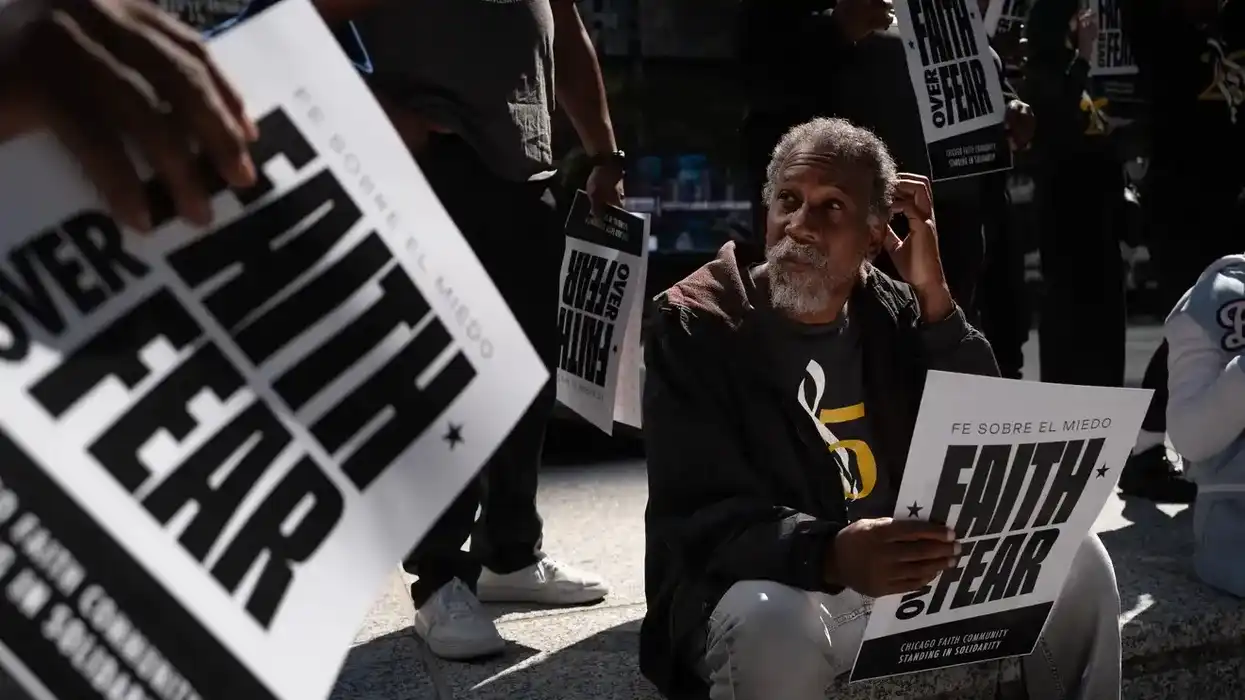When presidents deploy the National Guard, it’s usually to handle hurricanes, riots, or disasters. Donald Trump has found a darker use for it: punishing political opponents.
Over recent months, Trump has sent federalized Guard units into Los Angeles, Washington, D.C., Memphis, and now Chicago—where roughly 300 Illinois Guardsmen have been federalized and another 400 troops brought in from Texas. He calls it “law and order,” but the pattern is clear: Democratic-led cities are being targeted as enemy territory. Governors and mayors have objected, but Trump is testing how far he can stretch Title 10, the section of U.S. law that allows the president to federalize the National Guard in limited cases of invasion or rebellion—a law meant for national crisis, not political theater.
Weaponizing a Policy Tool
Title 10, which lets the president federalize the Guard during invasion, rebellion, or when “regular forces” can’t execute the law, has never been used to send troops into cities over protests or immigration disputes.
Title 10 lets the president federalize the Guard during invasion or rebellion, or when “regular forces” can’t execute the law. No president has ever used that clause to send troops into cities over protests or immigration disputes. Trump’s lawyers now argue his administration can’t “execute the laws of the United States” because local leaders resist immigration enforcement—a claim legal experts call “contrived.”
Courts are split. In Oregon, Judge Karin Immergut blocked Trump’s order, ruling that protests “did not pose a danger of rebellion.” In Illinois, Judge April Perry allowed deployments to continue while the state’s case proceeds. Governor J.B. Pritzker called the move “unlawful and unconstitutional,” accusing Trump of using troops as “political props.” Attorney General Kwame Raoul warned that Americans “should not live under the threat of occupation simply because their city or state leadership has fallen out of a president’s favor.”
Trump remains defiant. “We have an Insurrection Act for a reason,” he told reporters. “If I had to enact it, I’d do that.” Speaking to military commanders, he called “civil disturbances” the enemy within and even floated the idea of using “some of these dangerous cities as training grounds for our military”—as if U.S. troops were pawns on a partisan chessboard, pushed forward in a grudge match between the president and his political opponents.
Federalism on Life Support
Trump’s use of the Guard echoes his broader pattern of consolidating power—continuing resolutions and Schedule F weren’t isolated tactics but part of the same impulse to bypass local authority and concentrate decision‑making in the executive branch.
By invoking Title 10, Trump cuts governors out of the chain of command. What was once a shared institution—the citizen-soldier Guard—becomes an arm of presidential control. It mirrors the rest of his second term: centralized budgets through continuing resolutions, civil service purges under Schedule F, and government by executive order rather than legislation. This is not cooperation—it’s coercion.
This isn’t federalism; it’s federal occupation. The message to Democratic mayors and governors is simple: submit or be overrun. Each time Trump blurs the line between state autonomy and national command, he normalizes a presidency that treats dissent as rebellion and tramples the very Constitution he swore to uphold.
The Insurrection Act Looms
If Title 10 is a warning shot, the Insurrection Act would be a constitutional earthquake. The 1807 law lets presidents deploy troops domestically without state consent, even for arrests and searches. It’s been used sparingly—most notably in 1992 during the Rodney King riots. Trump now treats it as a standing option, saying he’d invoke it “if people were being killed and courts or governors were holding us up.”
Legal scholars see danger ahead. Georgetown’s Stephen Vladeck warns that courts have never clearly defined limits on this authority. “We’ve been fortunate for 230 years not to have to draw that line,” he said. “That luck has run out.” (NPR,Trump’s power to deploy National Guard, explained)
The New Face of Authoritarianism
Taken together, the executive orders, budget maneuvers, and troop deployments reveal a clear pattern: Trump doesn’t govern; he performs. The military and federal agents serve as stage props in his made‑for‑TV presidency. In Chicago, Border Patrol agents recently shot a civilian during a raid, and elsewhere federal teams rappelled from Black Hawk helicopters in televised arrests. Each episode blurs the line between policing and occupation.
This is more than strongman theater—it’s a stress test for the Constitution. When a president can redefine dissent as rebellion and courts hesitate to intervene, the balance of power that anchors American democracy begins to crumble. Meanwhile, the GOP‑led Congress stands by as Trump shreds the constitutional fabric.
What’s at Stake
The power to send troops into any city without state consent turns federalism into submission. It teaches future presidents that military force is just another political tool. Courts will eventually rule, but executive action moves faster than judicial restraint. That imbalance—between how quickly a president can act and how slowly democracy can respond—is how republics fail.
Trump isn’t merely expanding authority; he’s militarizing politics. Each time he crosses a line without consequence, the line disappears. The U.S. may not be under martial law yet, but for millions in cities branded “lawless” by their own president, it’s starting to feel that way.
Congress, dominated by partisans too afraid to challenge Trump, has become an enabler of this creeping militarization. But citizens don’t have the luxury of complacency. Civil society must step in where institutions falter: watchdog groups can document abuses; journalists can expose deployments for what they are—political theater, not public safety; and local communities can organize legal defense funds, support whistleblowers, and demand state-level protections against federal overreach. Democracy isn’t self-cleaning—it survives only when ordinary people defend its guardrails.
Robert Cropf is a professor of political science at Saint Louis University.




















